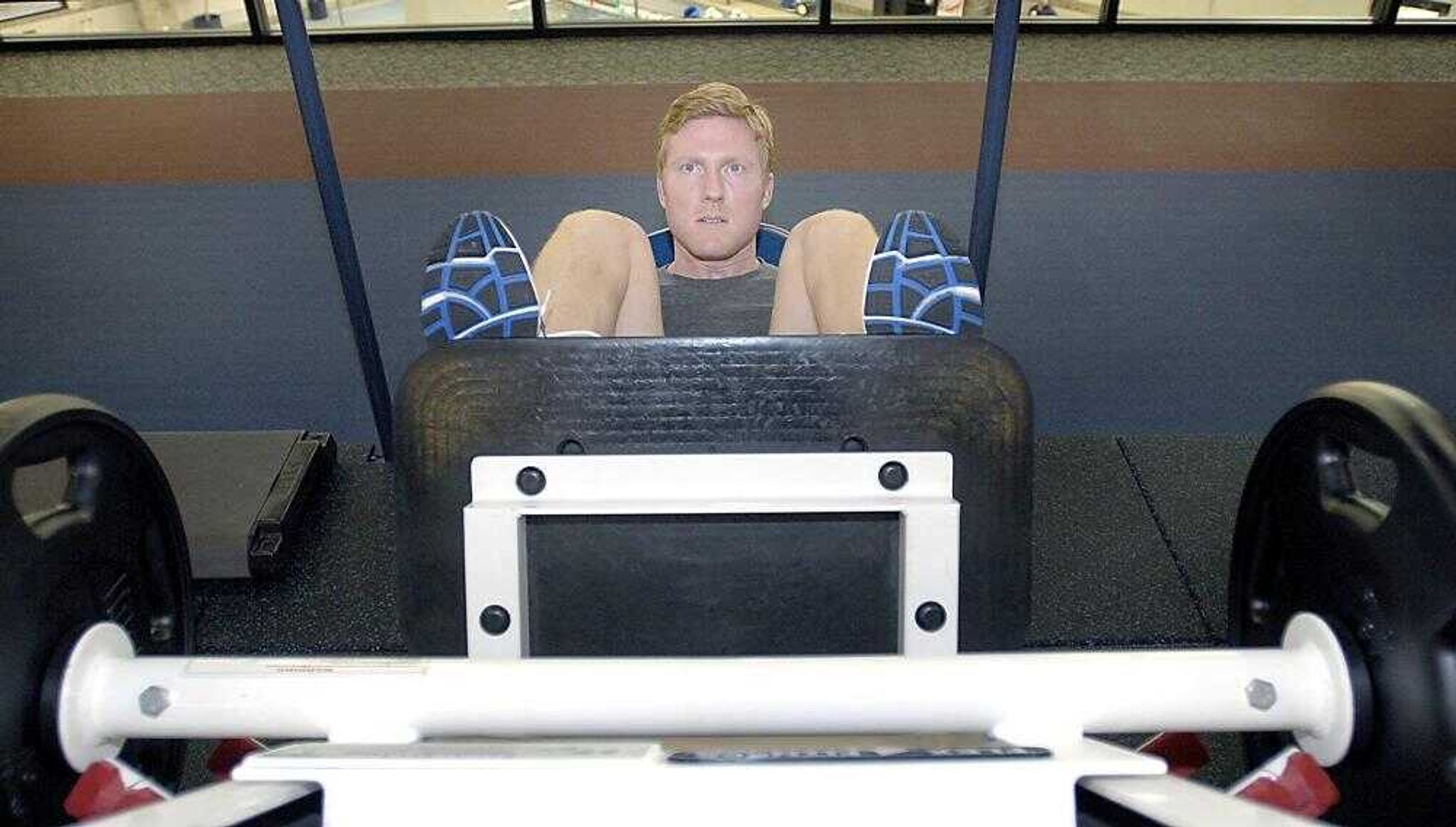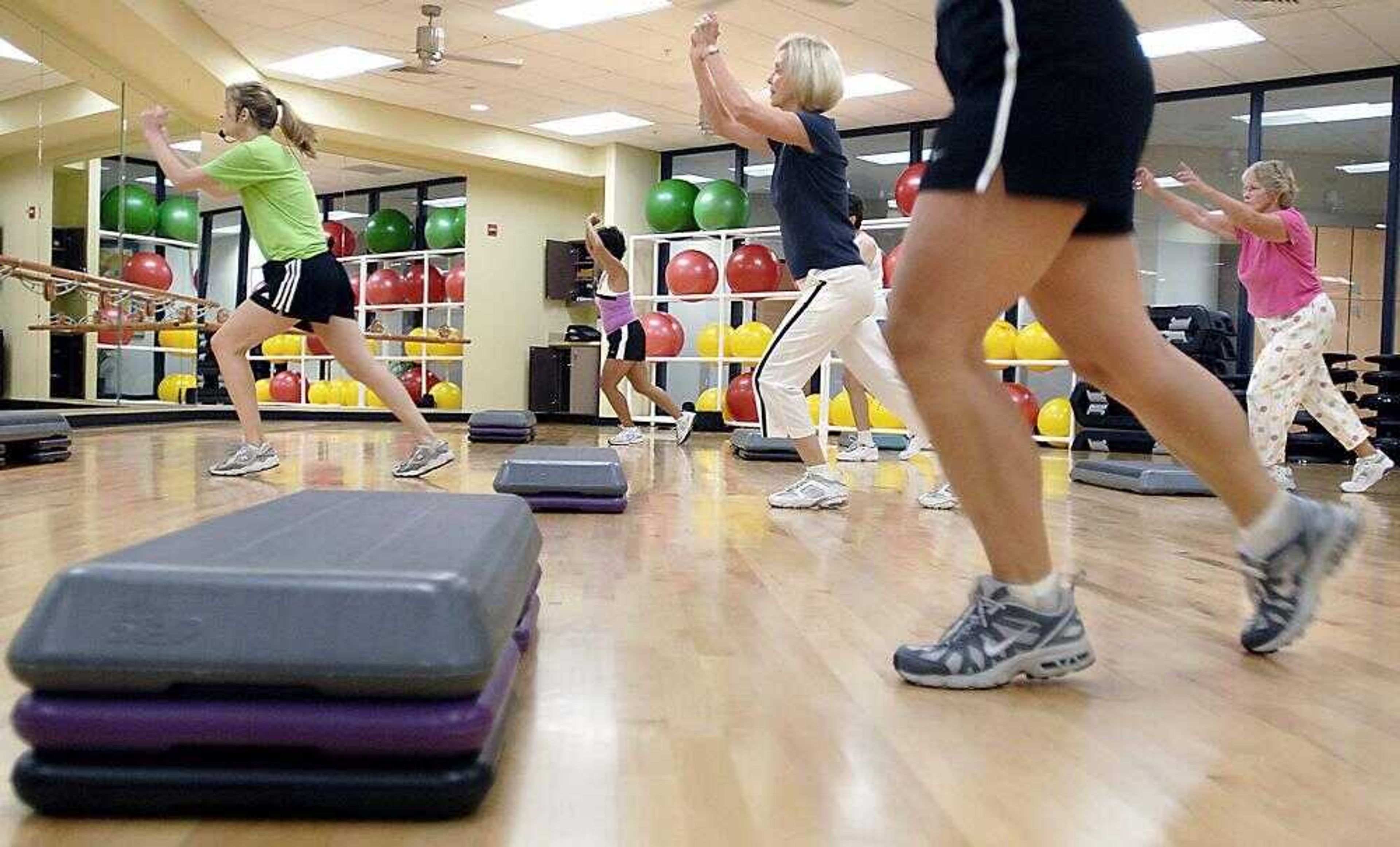Get heart pumping to trim down
Missouri earned a top-15 spot in a survey that calculated obesity ratings across the United States. Unfortunately, one was the highest and 50 was the lowest. The Show Me State tied with Texas for the No. 12 spot on the list. Neighboring states Tennessee, Kentucky and Arkansas were among the top 10 most obese states, while Illinois squeezed into the 25th spot. Mississippi was the most obese state, according to the survey conducted by the Trust for America's Health...
Missouri earned a top-15 spot in a survey that calculated obesity ratings across the United States. Unfortunately, one was the highest and 50 was the lowest. The Show Me State tied with Texas for the No. 12 spot on the list.
Neighboring states Tennessee, Kentucky and Arkansas were among the top 10 most obese states, while Illinois squeezed into the 25th spot. Mississippi was the most obese state, according to the survey conducted by the Trust for America's Health.
Missouri was one of 22 states to experience an increase in two straight years. The state weighed in at 24.5 percent of adults registering as obese. The national average is 22 percent.
The study called for action on the federal level with a National Strategy to Combat Obesity. Fitness experts in Southeast Missouri simply called for increased heart rate and decreased calories.

Heart rate
Everyone's target heart rate rests on two factors: age and resting heart rate. The target heart rate needs to be achieved and maintained for 30 to 45 minutes if you are eating healthily, said Terrance Sterling, a personal trainer with Fitness Plus.
The target heart rate is a range between 60 and 85 percent of the max heart rate.
"If you're not doing that, you may as well be sitting at home watching TV," Sterling said.
Don't just take a stroll through the park. To calculate the target heart rate, follow these steps:
1. Find your resting heart rate (RHR).
2. Find your max heart rate (MHR). To do this: 220 - Age = MHR
3. Find your heart rate reserve (HRR). To do this: MHR - RHR = HRR
4. To find the lower limit of your heart rate: (60 percent of HRR) + RHR
5. To find the upper limit of your heart rate: (80 percent of HRR) + MHR
The numbers from steps 4 and 5 are the target heart rate range.
Cardio
Cardiovascular activities that raise the heart rate can be done in or out of the gym. Sterling advises his clients to go to aerobics classes in addition to the cardio he puts them through.
Jogging, riding a bike, doing the elliptical machine or walking all count as cardio, provided the target heart rate is reached and maintained. Some equipment has sensors to maintain heart rate, but Sterling said a heart rate monitor can be picked up at most sports stores or bike shops.
Time
Because most people have not-so-ideal diets, the recommended amount of cardio may not cut it.
"If you're going to do that 30 to 40 minutes, your diet's got to be clean," Sterling said. He recommends an hour three times a week, but realizes most people do not have that time to devote.
Doing intervals can make a 20 minute workout as productive as 60 minutes on the treadmill. Intervals simply breakup the workout by varying the pace.
Go at one pace for 30 seconds and then increase the pace for 30 seconds. The times can be varied by doing 15 second intervals.
"As long as you're taking that heart rate up and dropping it down," Sterling said.
Nutrition
None of the workout means a thing if a diet staple is a cupcake or the like.
Sterling said be good all week and then on one meal, in one sitting, eat the things you've been missing: appetizer, entre and dessert if you want.
"It's good to have one blowout meal every seven days," Sterling said. "It keeps your sanity, and it helps your body out."
When the body starts receiving fewer calories than usual, it goes into a survival mode and holds onto calories just in case, Sterling said. That blowout meal with a plethora of calories will jump start your body's metabolism and make it understand it doesn't need to be in "survival mode."
Weights
Strength training is an integral part of any weight-loss program, according to Amy Sutherlin, the fitness manager at HealthPoint Plaza. "The weight training is what boosts your metabolism because the muscle needs more calories than the fat does," she said.
A weight workout should target the major muscle groups and consist of enough repetitions of the same exercise to fatigue the muscle.
Go until you know you can't do one more, but keep a good form, Sutherlin said.
Good form means keeping posture right, the core stable and not swinging the weight; that each rep is a controlled motion.
"If they're just wanting to tone up more, they're going to go on the higher end of repetitions," Sutherlin said. More definition can be attained with heavier weights and fewer reps.
Exercises
Weightlifting doesn't require a machine. Sutherlin recommended push-ups, squats, lunges, dips or overhead presses for the shoulders.
"They can do them at home, they can do them at a fitness center," she said.
Any exercise that targets the main muscle groups like quadriceps in the thigh, hamstrings in the back of the leg or calves in the bottom of the leg. Work the biceps, tricepes, shoulders and back as well.
Two sets of 15 repetitions does not have to be a time commitment. Even taking a minute break between sets, it's something that can be done in about 30 minutes a day, Sutherlin said.
To alleviate boredom or to appease a tight schedule, strength training can be split up during the day. Fifteen minutes working the legs and lower body in the morning coupled with 15 minutes of arms in the afternoon can still help.
"You'll reap the same benefits as if you try to do it all in one chunk of time," Sutherlin said. Even splitting cardio and weight training into different days can be beneficial.
If cardio and weights are done on the same day, however, Sutherlin recommends hitting the dumbbells first. Lactic acid buildup is a byproduct of weightlifting.
"[The body] can turn that lactic acid into fuels, so it can be a fuel source for your cardio," she said.
charris@semissourian.com
335-6611, extension 246
Connect with the Southeast Missourian Newsroom:
For corrections to this story or other insights for the editor, click here. To submit a letter to the editor, click here. To learn about the Southeast Missourian’s AI Policy, click here.










